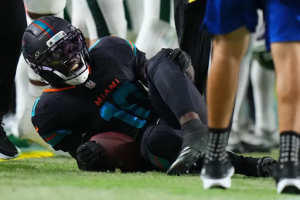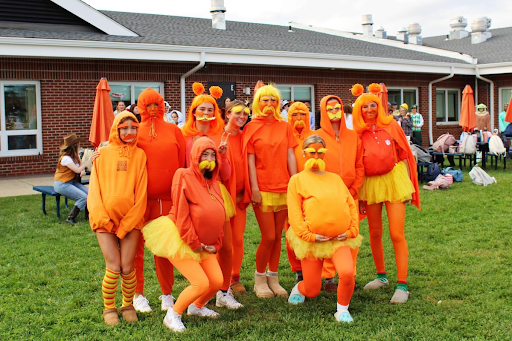
Many geometry teachers, both at SLHS and across the county, have been trying a new teaching style with their geometry classes. The method is based around group work and collaboration when solving new problems. The goal is that students can work together to develop new problem solving skills. However, not all students feel that group work is effective in teaching them new content.
Each class the students will break into randomized groups of three where they are given new problems to solve on a whiteboard. When they correctly solve each problem, the students move to the next question, each one getting progressively harder. The concept is that the students use their prior knowledge and collaborate to figure out new concepts on their own. The students are also encouraged to reference other group’s work to get new ideas. Groups that finish early are welcomed to collaborate with other groups and explain what they learned. The class is centered around conversation and expanding on previous knowledge.
“I find that students are much more engaged, and I get a lot of students working simultaneously on problems, and they’re explaining things, they’re learning how to be teachers, and good listeners,” says Mrs.Welch, a geometry teacher. She also believes that the act of writing on the whiteboard helps students think harder.
“When I have them up on their feet, away from their phones and the desk, they are not distracted and they work well with each other,” Welch says. She thinks that when students only work at their desks, they get passive and it’s harder for them to pay attention. Additionally, students can write larger on the whiteboards than a piece of paper which can make it easier for them to see their mistakes.
“Kids really have to advocate for themselves in this kind of model,” Welch says. She mentioned that the quieter students can have more trouble adapting to the group work as they have to speak up in their groups to really learn.
“How much [students] buy into their group time will have an effect on how well they do,” Welch says. Students who participate more in the groups tend to have higher grades on tests.
Although this teaching style sounds great on paper, not all students believe they are learning much through group work. One student, Shea Smith, is in a geometry class that uses this teaching method.
“It is not a very productive way to learn, in my opinion, because your group also doesn’t know how to solve it,” Smith says about her geometry class. She also mentioned how well she learns with group work is used as the basis for learning new content.
“You don’t learn a lot quickly, maybe over time you’ll learn some stuff, but in one class you don’t learn everything that you should,” Smith says. She also reflected on how it can be difficult to now have access to many resources while in the groups.
“You have to figure it out yourself and you can’t google it, so it’s kinda hard for you when your teacher doesn’t teach it to you,” Smith says, “You just have to learn from others who also don’t know how to answer the problems.” She also mentioned the way that the new teaching style is being reflected in the class’s grades.
“I think it’s impacting [the class’s grades] in a negative way,” Smith says about the teaching style.
Smith also remarked on how she learned math last year, where the class was more of a conversation, with the teacher going over everything on the board.
“If I learned geometry the way that I learned math last year, I definitely would have done better on the test.” In addition, if you seek out help from other groups, they might not fully understand the topic and tell you incorrect information. She feels that time is better spent with the teacher going over problems, rather than classmates. After all, teachers are the professionals, not students.
It’s become evident that teachers and students have contrary opinions about group work in learning math. Some teachers view it as a way for students to be more engaged and develop a higher understanding of math. Meanwhile, some students don’t feel like they are learning as much as they would with a different style of teaching.



















